Fernando Pereira
Instituto Superior Técnico - Universidade de Lisboa, Lisbon, Portugal, Instituto de Telecomunicações, Portugal
Point Cloud Geometry Scalable Coding Using a Resolution and Quality-conditioned Latents Probability Estimator
Feb 19, 2025Abstract:In the current age, users consume multimedia content in very heterogeneous scenarios in terms of network, hardware, and display capabilities. A naive solution to this problem is to encode multiple independent streams, each covering a different possible requirement for the clients, with an obvious negative impact in both storage and computational requirements. These drawbacks can be avoided by using codecs that enable scalability, i.e., the ability to generate a progressive bitstream, containing a base layer followed by multiple enhancement layers, that allow decoding the same bitstream serving multiple reconstructions and visualization specifications. While scalable coding is a well-known and addressed feature in conventional image and video codecs, this paper focuses on a new and very different problem, notably the development of scalable coding solutions for deep learning-based Point Cloud (PC) coding. The peculiarities of this 3D representation make it hard to implement flexible solutions that do not compromise the other functionalities of the codec. This paper proposes a joint quality and resolution scalability scheme, named Scalable Resolution and Quality Hyperprior (SRQH), that, contrary to previous solutions, can model the relationship between latents obtained with models trained for different RD tradeoffs and/or at different resolutions. Experimental results obtained by integrating SRQH in the emerging JPEG Pleno learning-based PC coding standard show that SRQH allows decoding the PC at different qualities and resolutions with a single bitstream while incurring only in a limited RD penalty and increment in complexity w.r.t. non-scalable JPEG PCC that would require one bitstream per coding configuration.
Deep Learning-based Event Data Coding: A Joint Spatiotemporal and Polarity Solution
Feb 05, 2025



Abstract:Neuromorphic vision sensors, commonly referred to as event cameras, have recently gained relevance for applications requiring high-speed, high dynamic range and low-latency data acquisition. Unlike traditional frame-based cameras that capture 2D images, event cameras generate a massive number of pixel-level events, composed by spatiotemporal and polarity information, with very high temporal resolution, thus demanding highly efficient coding solutions. Existing solutions focus on lossless coding of event data, assuming that no distortion is acceptable for the target use cases, mostly including computer vision tasks. One promising coding approach exploits the similarity between event data and point clouds, thus allowing to use current point cloud coding solutions to code event data, typically adopting a two-point clouds representation, one for each event polarity. This paper proposes a novel lossy Deep Learning-based Joint Event data Coding (DL-JEC) solution adopting a single-point cloud representation, thus enabling to exploit the correlation between the spatiotemporal and polarity event information. DL-JEC can achieve significant compression performance gains when compared with relevant conventional and DL-based state-of-the-art event data coding solutions. Moreover, it is shown that it is possible to use lossy event data coding with its reduced rate regarding lossless coding without compromising the target computer vision task performance, notably for event classification. The use of novel adaptive voxel binarization strategies, adapted to the target task, further enables DL-JEC to reach a superior performance.
The JPEG Pleno Learning-based Point Cloud Coding Standard: Serving Man and Machine
Sep 12, 2024Abstract:Efficient point cloud coding has become increasingly critical for multiple applications such as virtual reality, autonomous driving, and digital twin systems, where rich and interactive 3D data representations may functionally make the difference. Deep learning has emerged as a powerful tool in this domain, offering advanced techniques for compressing point clouds more efficiently than conventional coding methods while also allowing effective computer vision tasks performed in the compressed domain thus, for the first time, making available a common compressed visual representation effective for both man and machine. Taking advantage of this potential, JPEG has recently finalized the JPEG Pleno Learning-based Point Cloud Coding (PCC) standard offering efficient lossy coding of static point clouds, targeting both human visualization and machine processing by leveraging deep learning models for geometry and color coding. The geometry is processed directly in its original 3D form using sparse convolutional neural networks, while the color data is projected onto 2D images and encoded using the also learning-based JPEG AI standard. The goal of this paper is to provide a complete technical description of the JPEG PCC standard, along with a thorough benchmarking of its performance against the state-of-the-art, while highlighting its main strengths and weaknesses. In terms of compression performance, JPEG PCC outperforms the conventional MPEG PCC standards, especially in geometry coding, achieving significant rate reductions. Color compression performance is less competitive but this is overcome by the power of a full learning-based coding framework for both geometry and color and the associated effective compressed domain processing.
Double Deep Learning-based Event Data Coding and Classification
Jul 22, 2024Abstract:Event cameras have the ability to capture asynchronous per-pixel brightness changes, called "events", offering advantages over traditional frame-based cameras for computer vision applications. Efficiently coding event data is critical for transmission and storage, given the significant volume of events. This paper proposes a novel double deep learning-based architecture for both event data coding and classification, using a point cloud-based representation for events. In this context, the conversions from events to point clouds and back to events are key steps in the proposed solution, and therefore its impact is evaluated in terms of compression and classification performance. Experimental results show that it is possible to achieve a classification performance of compressed events which is similar to one of the original events, even after applying a lossy point cloud codec, notably the recent learning-based JPEG Pleno Point Cloud Coding standard, with a clear rate reduction. Experimental results also demonstrate that events coded using JPEG PCC achieve better classification performance than those coded using the conventional lossy MPEG Geometry-based Point Cloud Coding standard. Furthermore, the adoption of learning-based coding offers high potential for performing computer vision tasks in the compressed domain, which allows skipping the decoding stage while mitigating the impact of coding artifacts.
Point Cloud Geometry Scalable Coding with a Quality-Conditioned Latents Probability Estimator
Apr 11, 2024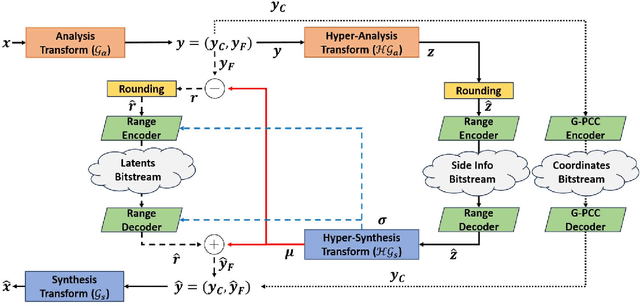
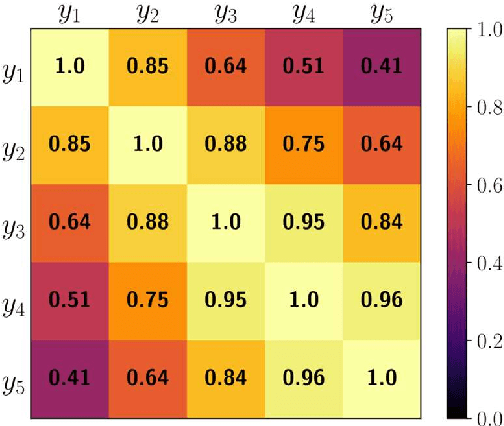

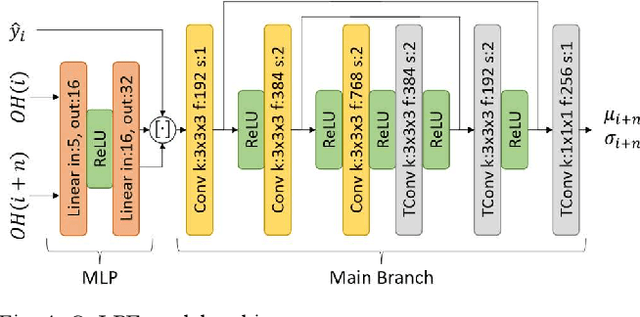
Abstract:The widespread usage of point clouds (PC) for immersive visual applications has resulted in the use of very heterogeneous receiving conditions and devices, notably in terms of network, hardware, and display capabilities. In this scenario, quality scalability, i.e., the ability to reconstruct a signal at different qualities by progressively decoding a single bitstream, is a major requirement that has yet to be conveniently addressed, notably in most learning-based PC coding solutions. This paper proposes a quality scalability scheme, named Scalable Quality Hyperprior (SQH), adaptable to learning-based static point cloud geometry codecs, which uses a Quality-conditioned Latents Probability Estimator (QuLPE) to decode a high-quality version of a PC learning-based representation, based on an available lower quality base layer. SQH is integrated in the future JPEG PC coding standard, allowing to create a layered bitstream that can be used to progressively decode the PC geometry with increasing quality and fidelity. Experimental results show that SQH offers the quality scalability feature with very limited or no compression performance penalty at all when compared with the corresponding non-scalable solution, thus preserving the significant compression gains over other state-of-the-art PC codecs.
Gemma: Open Models Based on Gemini Research and Technology
Mar 13, 2024



Abstract:This work introduces Gemma, a family of lightweight, state-of-the art open models built from the research and technology used to create Gemini models. Gemma models demonstrate strong performance across academic benchmarks for language understanding, reasoning, and safety. We release two sizes of models (2 billion and 7 billion parameters), and provide both pretrained and fine-tuned checkpoints. Gemma outperforms similarly sized open models on 11 out of 18 text-based tasks, and we present comprehensive evaluations of safety and responsibility aspects of the models, alongside a detailed description of model development. We believe the responsible release of LLMs is critical for improving the safety of frontier models, and for enabling the next wave of LLM innovations.
Deep Learning-based Compressed Domain Multimedia for Man and Machine: A Taxonomy and Application to Point Cloud Classification
Oct 28, 2023



Abstract:In the current golden age of multimedia, human visualization is no longer the single main target, with the final consumer often being a machine which performs some processing or computer vision tasks. In both cases, deep learning plays a undamental role in extracting features from the multimedia representation data, usually producing a compressed representation referred to as latent representation. The increasing development and adoption of deep learning-based solutions in a wide area of multimedia applications have opened an exciting new vision where a common compressed multimedia representation is used for both man and machine. The main benefits of this vision are two-fold: i) improved performance for the computer vision tasks, since the effects of coding artifacts are mitigated; and ii) reduced computational complexity, since prior decoding is not required. This paper proposes the first taxonomy for designing compressed domain computer vision solutions driven by the architecture and weights compatibility with an available spatio-temporal computer vision processor. The potential of the proposed taxonomy is demonstrated for the specific case of point cloud classification by designing novel compressed domain processors using the JPEG Pleno Point Cloud Coding standard under development and adaptations of the PointGrid classifier. Experimental results show that the designed compressed domain point cloud classification solutions can significantly outperform the spatial-temporal domain classification benchmarks when applied to the decompressed data, containing coding artifacts, and even surpass their performance when applied to the original uncompressed data.
Generating Synthetic Data for Conversational Music Recommendation Using Random Walks and Language Models
Jan 27, 2023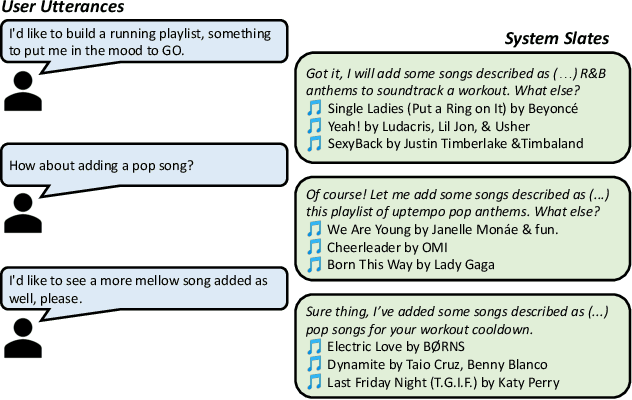
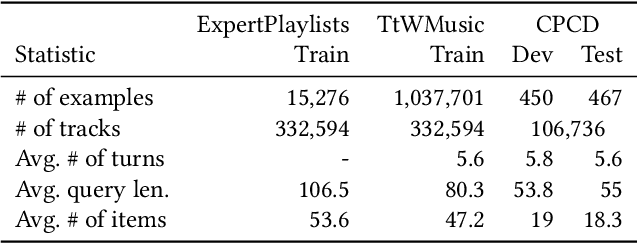


Abstract:Conversational recommendation systems (CRSs) enable users to use natural language feedback to control their recommendations, overcoming many of the challenges of traditional recommendation systems. However, the practical adoption of CRSs remains limited due to a lack of rich and diverse conversational training data that pairs user utterances with recommendations. To address this problem, we introduce a new method to generate synthetic training data by transforming curated item collections, such as playlists or movie watch lists, into item-seeking conversations. First, we use a biased random walk to generate a sequence of slates, or sets of item recommendations; then, we use a language model to generate corresponding user utterances. We demonstrate our approach by generating a conversational music recommendation dataset with over one million conversations, which were found to be consistent with relevant recommendations by a crowdsourced evaluation. Using the synthetic data to train a CRS, we significantly outperform standard retrieval baselines in offline and online evaluations.
IT/IST/IPLeiria Response to the Call for Proposals on JPEG Pleno Point Cloud Coding
Aug 04, 2022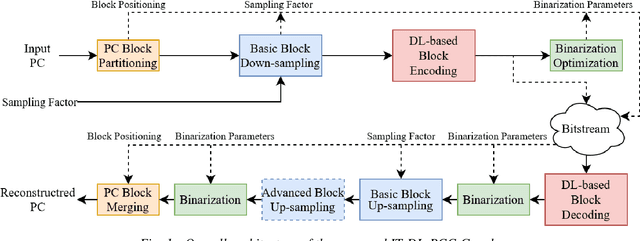
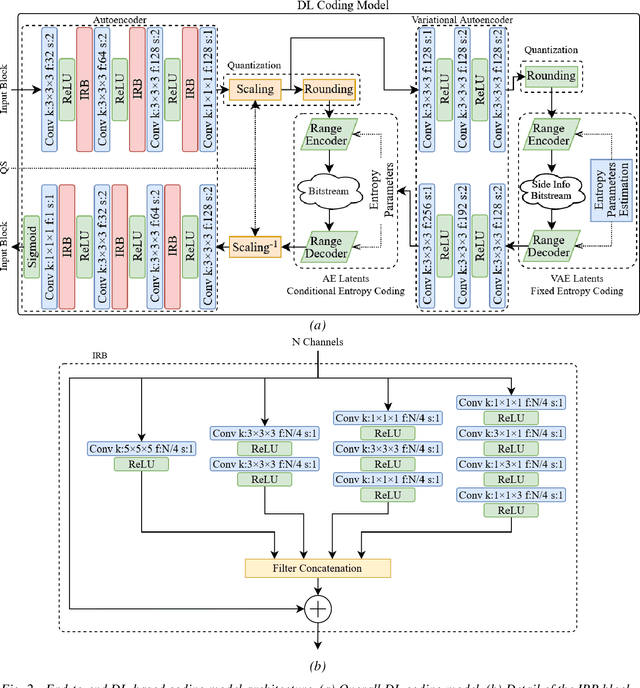
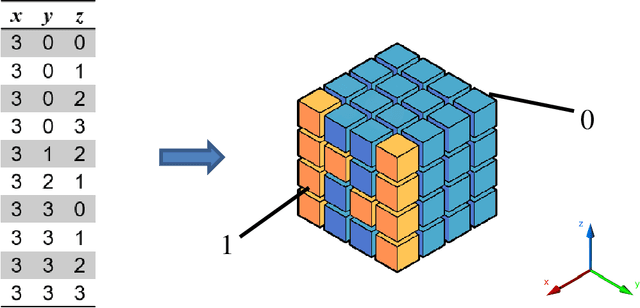
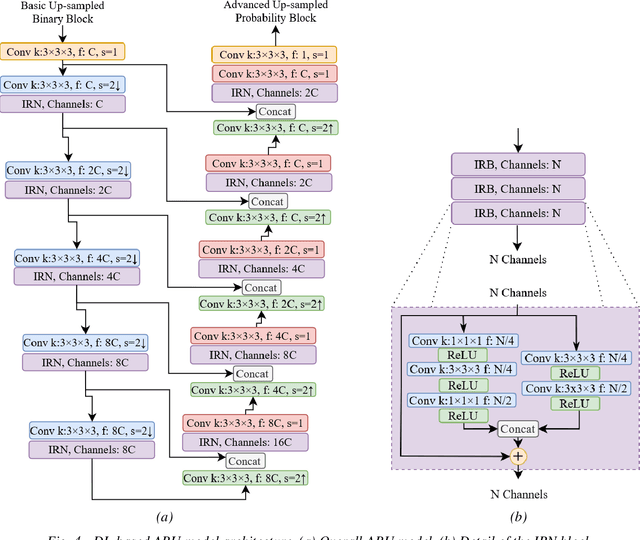
Abstract:This document describes a deep learning-based point cloud geometry codec and a deep learning-based point cloud joint geometry and colour codec, submitted to the Call for Proposals on JPEG Pleno Point Cloud Coding issued in January 2022. The proposed codecs are based on recent developments in deep learning-based PC geometry coding and offer some of the key functionalities targeted by the Call for Proposals. The proposed geometry codec offers a compression efficiency that outperforms the MPEG G-PCC standard and outperforms or is competitive with the V-PCC Intra standard for the JPEG Call for Proposals test set; however, the same does not happen for the joint geometry and colour codec due to a quality saturation effect that needs to be overcome.
Joint Geometry and Color Projection-based Point Cloud Quality Metric
Aug 05, 2021
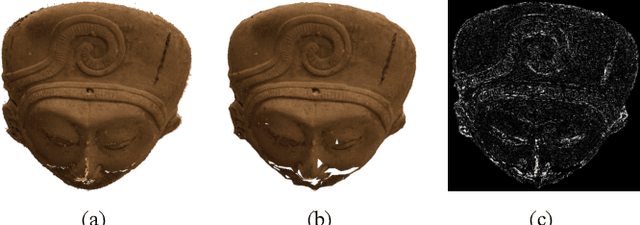
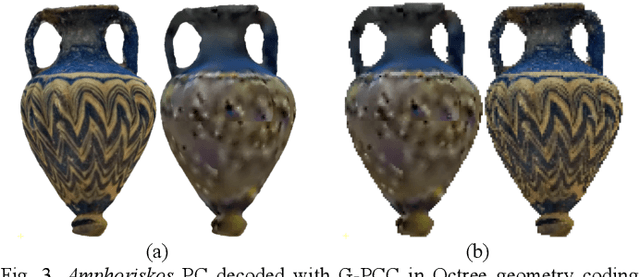
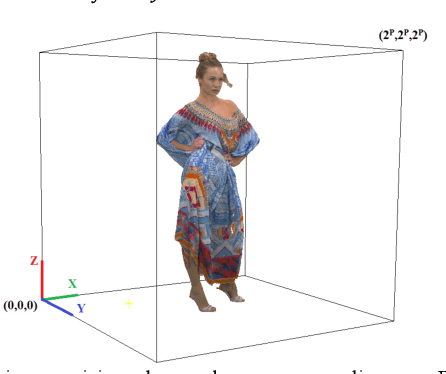
Abstract:Point cloud coding solutions have been recently standardized to address the needs of multiple application scenarios. The design and assessment of point cloud coding methods require reliable objective quality metrics to evaluate the level of degradation introduced by compression or any other type of processing. Several point cloud objective quality metrics has been recently proposed to reliable estimate human perceived quality, including the so-called projection-based metrics. In this context, this paper proposes a joint geometry and color projection-based point cloud objective quality metric which solves the critical weakness of this type of quality metrics, i.e., the misalignment between the reference and degraded projected images. Moreover, the proposed point cloud quality metric exploits the best performing 2D quality metrics in the literature to assess the quality of the projected images. The experimental results show that the proposed projection-based quality metric offers the best subjective-objective correlation performance in comparison with other metrics in the literature. The Pearson correlation gains regarding D1-PSNR and D2-PSNR metrics are 17% and 14.2 when data with all coding degradations is considered.
 Add to Chrome
Add to Chrome Add to Firefox
Add to Firefox Add to Edge
Add to Edge